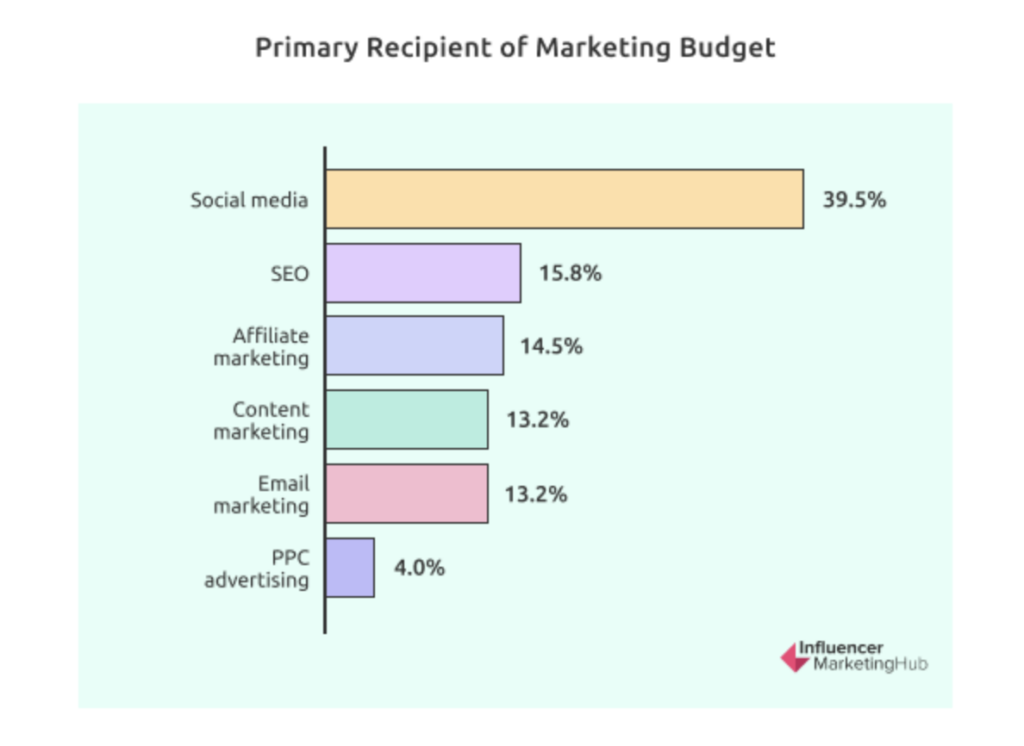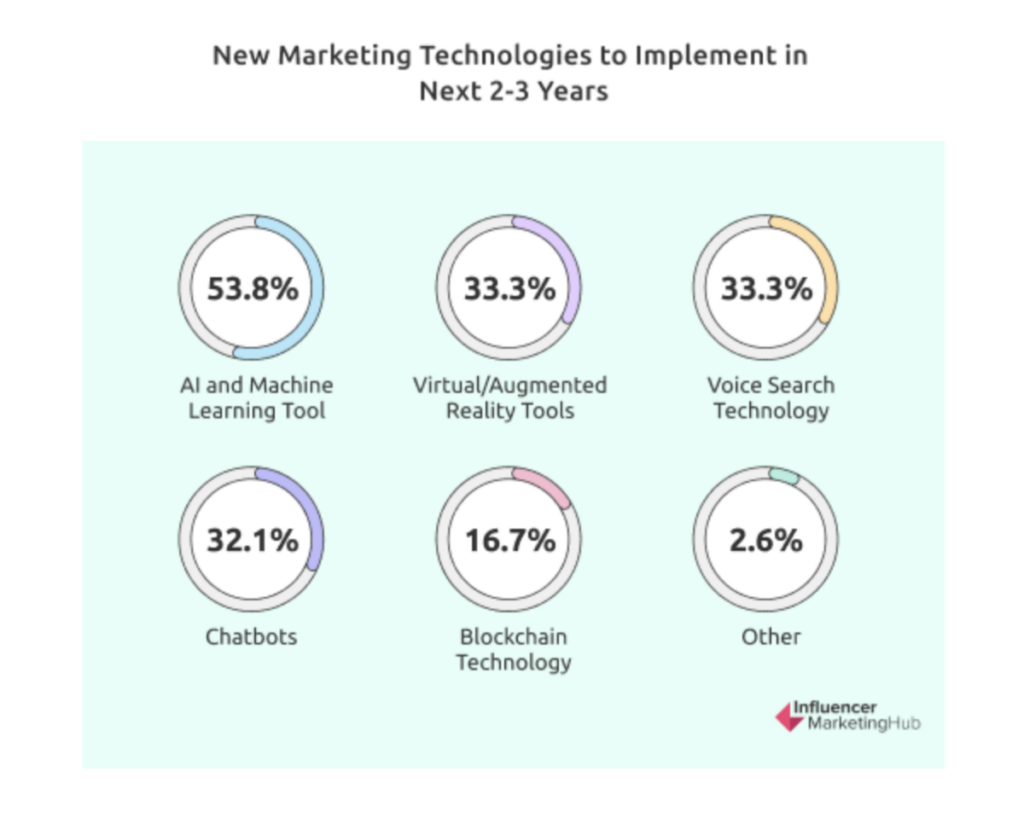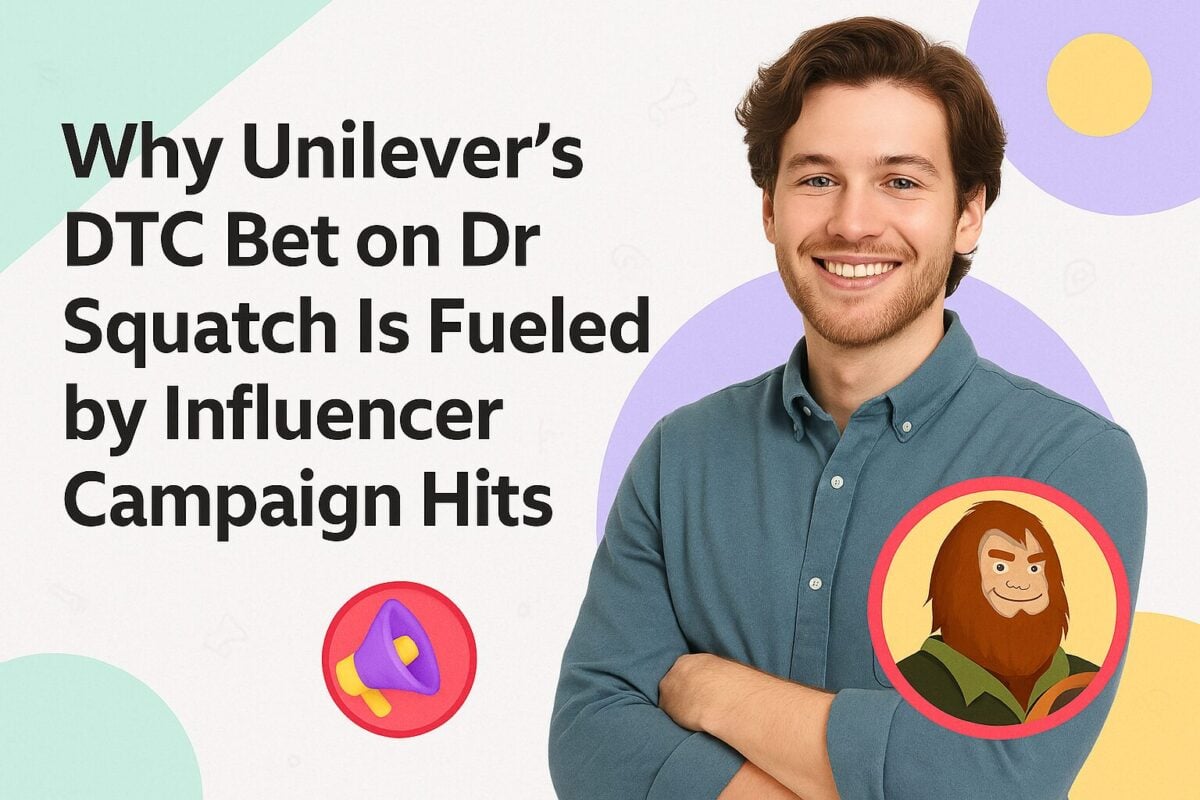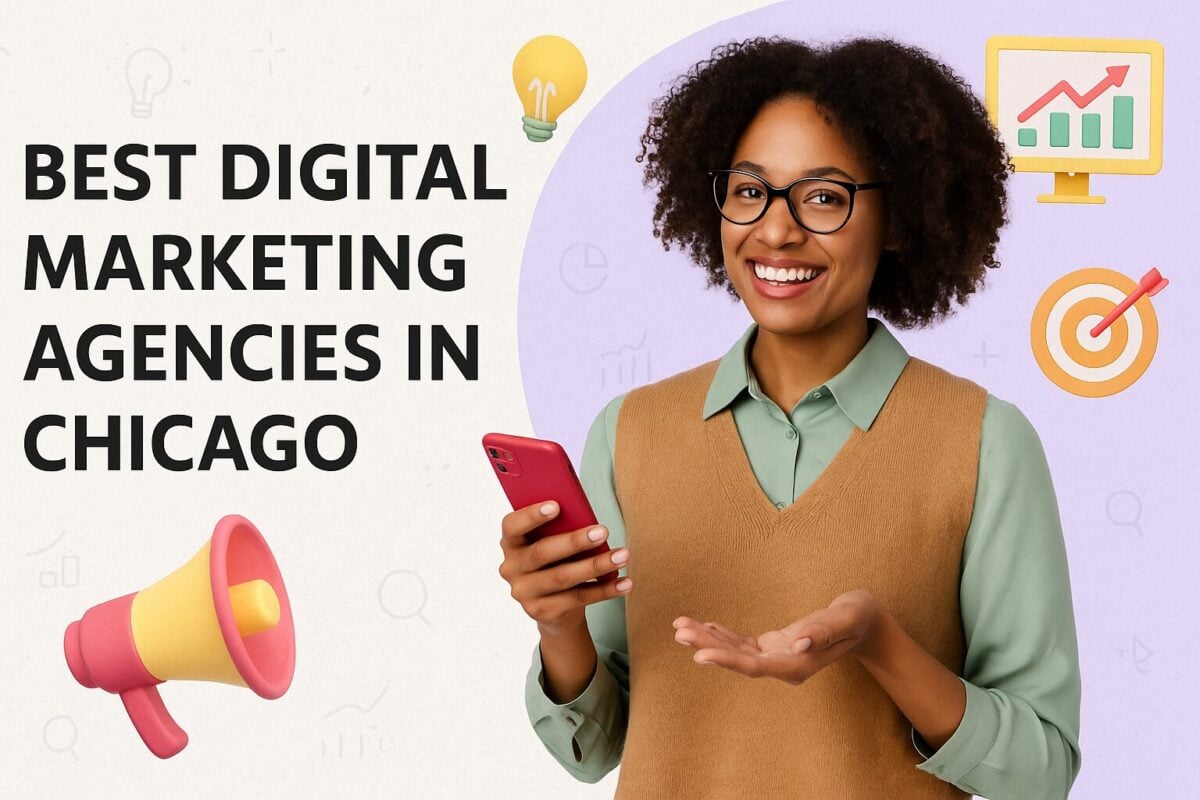One of the challenges of digital marketing is identifying where to start. This is understandable. There are so many strategies that fit under the digital marketing umbrella, which confuses business owners further.
As a digital marketing agency, it’s part of your job to suggest relevant services based on your clients’ unique needs and goals. One way to do that is to offer different types of digital marketing packages.
Aside from allowing you to bundle relevant services neatly together, it can also be a more valuable proposition, helping you to win clients. Here’s how to create a digital marketing package that offers value to both agency and client.
A 7-step Guide to Creating a Digital Marketing Package [+ Examples Included]:
- Step 1: List Your Services
- Step 2: Conduct Market Research
- Step 3: Bundle Relevant Services Together
- Step 4: Decide on Your Pricing Structure
- Step 4: Identify Attractive Additional Services
- Step 5: Name Your Packages
- Step 6: Write Package Descriptions
- Step 7: Test and Adapt
- TLDR: Research, Package, Promote, Adapt
- Frequently Asked Questions
Step 1: List Your Services
Digital marketing encompasses a long list of services, each requiring a specific skill set and hands-on experience.
Examples of the most popular digital marketing services include:
- Custom website design
- Search engine optimization (SEO)
- Pay-per-click (PPC) advertising
- Social media marketing and management
- Content marketing
- Influencer marketing
- Email marketing
- Affiliate marketing
Our Digital Marketing Benchmark Report 2024 found that social media marketing in particular is in demand. It’s the primary recipient of marketing budgets and delivers the highest ROI.

Marketing Channels with the Highest ROI
What further complicates this step of choosing which services to offer is that each of these digital marketing services can be broken down into further services. Take SEO, for example, which is one of the broadest categories of digital marketing. It can include:
- Keyword research
- Website audits
- On-page optimization
- Link building
- Content creation
When thinking about which services to include, also consider how deep your skills go. If you only have a broad understanding, you might need to stick to a high-level offering.
While SEO is broad and technical, Magee Clegg, founder and CEO of Cleartail Marketing, a B2B marketing agency with 10 years of experience below its belt, highly recommends that you include it in a digital marketing package.
He explains:
His suggestion is to rely on SEO tools like Google Keyword Planner and Semrush.

Semrush Dashboard
Kevin Watts, founder of Raincross, an award-winning digital marketing and website design agency based in California, USA, also recommends SEO strongly. Along with SEO, his tip for creating a digital marketing package is to include other foundational services like:
- PPC
- A robust content marketing strategy
- Responsive web design
He explains:
While you’ll need to have the relevant skills and experience to offer all your services, now is also the opportune time to think about which digital marketing services you would like to offer in the future. Where do you see your agency in two years? Or five years?
What about the future of the industry? Recent major algorithmic changes have reminded us again that, as marketers, we need to be flexible and able to adjust. If SEO is no longer generating the same amount for organic traffic, you need to be ready to pivot.
Trending Digital Marketing Services: Future High-Demand Opportunities
Adam Haworth, founder of three distinct digital marketing ventures - Contactora, WP Helper, and Lakewood Media, specifically highlights the value that augmented reality (AR) and virtual reality (VR) can offer.
He explains:
He also adds that the integration of generative AI into digital marketing packages can be a game-changer. Here’s how he recommends that marketing teams can leverage it:
Our Digital Marketing Benchmark Report 2024 also underscores the potential of AI, VR, and AR. According to our data, it’s the two main new marketing technologies to implement in the next 2-3 years.
Step 2: Conduct Market Research
When considering which services to package your deals around, you’ll also need to let demand guide you. Ask yourself the following questions:
- Who will you be targeting (for example, startups, SMBs, and/or enterprise clients)?
- What are their pain points?
- In which areas do they need help?
- How can you offer solutions to address those main concerns?
For example, if you’re targeting new small businesses that are just getting started with digital marketing, you may need to help set up their website and social media profiles. Meanwhile, some businesses may have all of this set up but don’t seem to see any results, in which case they’ll likely need website and social media audits to start with the optimization process.
Magee Clegg emphasizes the importance of understanding the client's goals. He suggests that you start with a customer needs assessment. This will involve getting to know your own clients’ target audiences and markets too.
For example, if you’ll be targeting B2B businesses, video content marketing will be an in-demand service. A survey among B2B marketers completed in July 2023 found that 69% would invest in this service in 2024.
Step 3: Bundle Relevant Services Together
Armed with an understanding of what you’re capable of offering and what your target audience needs, you can start to group relevant services together. You need to be strategic about it. The services that you group together to create a package should complement one another, while at the same time offer short-term and long-term value.
For example, SmartSites, a 7x Inc. 5000 digital marketing agency and rated as one of the top social media marketing agencies in New York, groups the following services together to create a social media management (SMM) package:
- Customized strategy
- Optimized profiles
- Monthly content calendars
- Custom graphics
- Initial hashtag research
- Boosted posts
Let’s take hashtag research as an example here. It fits in perfectly with an SMM package. Including it in a digital marketing package tailored around custom website design won’t make sense.
Here’s how LYFE Marketing, an Atlanta-based digital marketing agency with 370 Google reviews and a rating of 4.5, structures its entry-level SMM package:
- Image posts for Facebook and Instagram
- Page monitoring and responding
- Sponsored Posts and Follower Ads
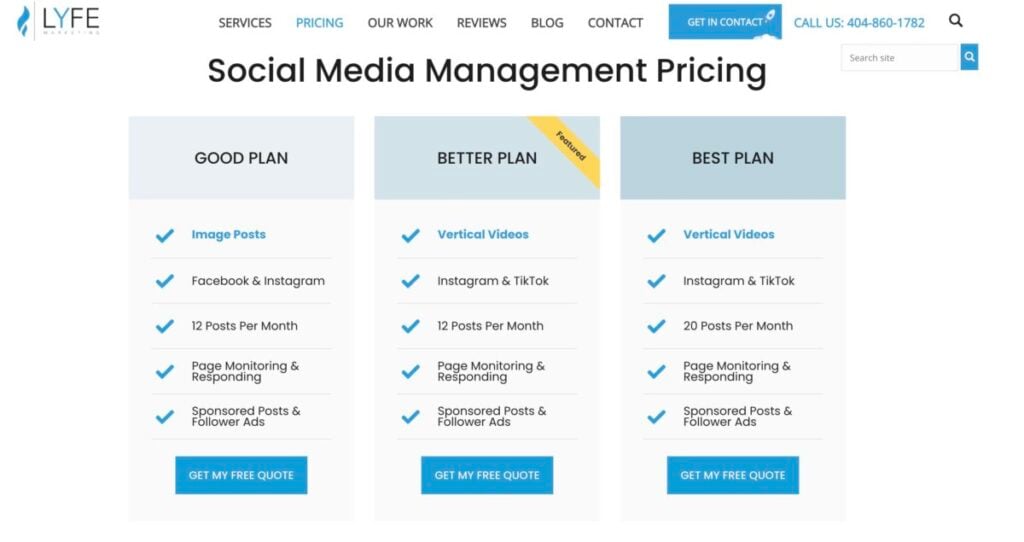
Digital Marketing Packages - LYFE Marketing SMM Example
And, here’s how LYFE Marketing’s email marketing package looks like:

Digital Marketing Packages - LYFE Marketing Email Example
You get the idea. List maintenance fits in perfectly with email marketing, but won’t make sense for your social media efforts. Instead, a service like page monitoring applies better to social media marketing.
Step 4: Decide on Your Pricing Structure
Another (more obvious) way to offer value is by pricing your packages correctly. Digital marketing packages generally work out cheaper compared to what each individual service will cost.
According to Surfer SEO, the average cost of a basic digital marketing package can start from $1,000 per month. In the same breath, the pricing can range significantly and digital marketing packages can cost as much as $10,000 per month, even more.
This is why most digital marketing agencies create tiered packages. It also enables digital marketing agencies to appeal to clients with different spending power or at different stages of growth.
Michael Melen, co-founder of SmartSites, suggests that you start with the lowest entry point that makes sense. This way, you can get businesses in and then scale them up.
In practice it generally takes the shape of three tiers. For example:
- A basic, entry-level package aimed at small businesses or new clients
- A mid-sized plan for SMBs and clients looking to accelerate their marketing
- An advanced package aimed at enterprise clients with big budgets
Here’s how WebFX, one of the top Google Ads agencies, prices their PPC services:
- A Lite plan that costs $600 per month
- A Pro plan that costs $975 per month (or 15% of the ad spend, if that’s higher than the monthly cost)
- An Enterprise plan that costs 12% of your monthly ad spend
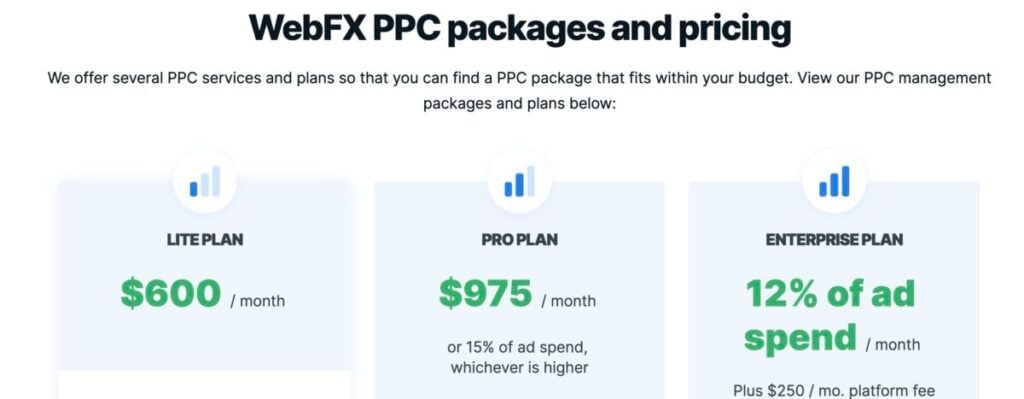
Digital Marketing Packages - WebFX PPC Pricing
You’ll notice that the first two plans bill clients differently. Here, clients are charged a fixed monthly fee. However, enterprise clients are charged a percentage based on their monthly ad spend. For services like PPC, this is common practice.
You’ll also notice that each package includes a one-off fee for initial optimization. Some agencies decide to charge a type of setup fee like this. It’s also not uncommon for this one-off fee to be more than the monthly cost.

Digital Marketing Packages - WebFX PPC Pricing (Setup)
Needless to say, your pricing should still allow you to generate a profit. As such, you’ll need to do a careful cost analysis to work out how much it will cost you to deliver those services.
For example, you’ll need to account for expenses like:
- Rent, utilities, and other office expenses
- Tax
- Attorney fees for setting up client and employment contracts
- Software subscriptions and licenses
- Advertising your own marketing services and packages
- Salaries
Step 4: Identify Attractive Additional Services
Offering additional services at an extra cost is highly recommended. It offers multiple benefits like:
- Creating another way that you can monetize your services
- Introducing a level of customization that digital marketing packages often lack
- Enabling you to meet clients’ unique needs and requirements
- Helping you to reach more potential clients
- Allowing you to offer all your skills, even those that clients don’t typically need continuously
Examples of these types of one-off marketing services that you can offer as a paid extra include:
- Training
- Social media account setup
- Landing page design
- Product photography
- Logo design
In the case of social media marketing packages, it’s the ideal way to offer extra social media platforms. You can, for example, structure your package in such a way that 2-3 platforms are covered. However, if they wish to add more social channels, like TikTok, Threads, or YouTube, it will cost extra.
This is what LYFE Marketing has done. Additional social networks are charged at $100 per month per network.
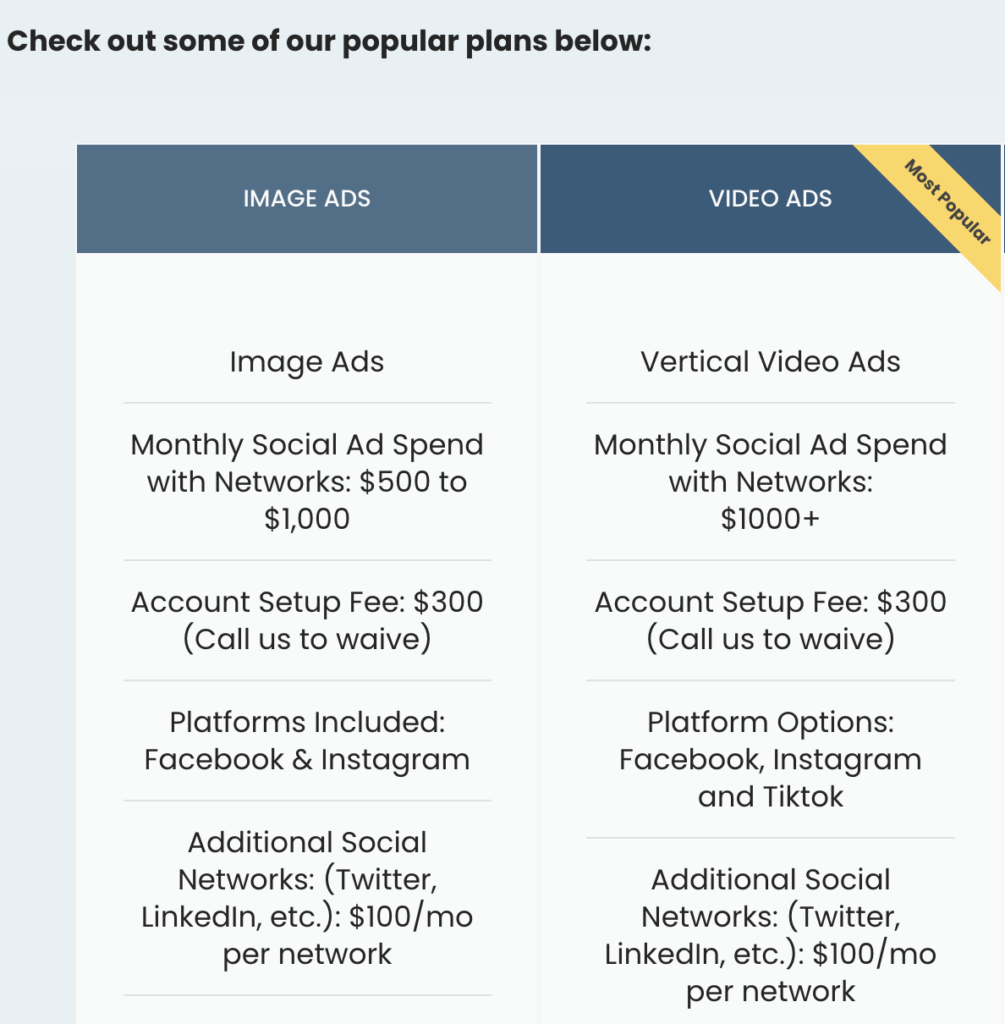
Digital Marketing Packages - LYFE Marketing SMM Extra Channels Example
What is essential, though, is that you communicate it clearly. Prospective clients should under no circumstance be under the impression that these extra services are available as part of the monthly fee of the package. Transparency is critical.
Vaibhav Kakkar, founder of Digital Web Solutions, a full-service digital marketing agency with five offices on three continents and featured by the likes of Forbes, underscores the importance of communication. He explains:
Step 5: Name Your Packages
It might sound like an insignificant exercise, but how you name the packages could be a key factor influencing decision-makers’ final choice. Basically, the name of your package should create the impression that it has real value to offer. It should instill confidence.
For example, a “Basic” plan may offer the exact same services as a “Bronze” plan. However, Bronze can sound more appealing, while still being equally descriptive.
Comrade Digital Marketing’s naming approach serves as an excellent example. Instead of sticking to generic names like “Basic”, “Standard”, or “Advanced”, they used “Steady Growth”, “Faster Growth”, and “Full Speed Growth”.
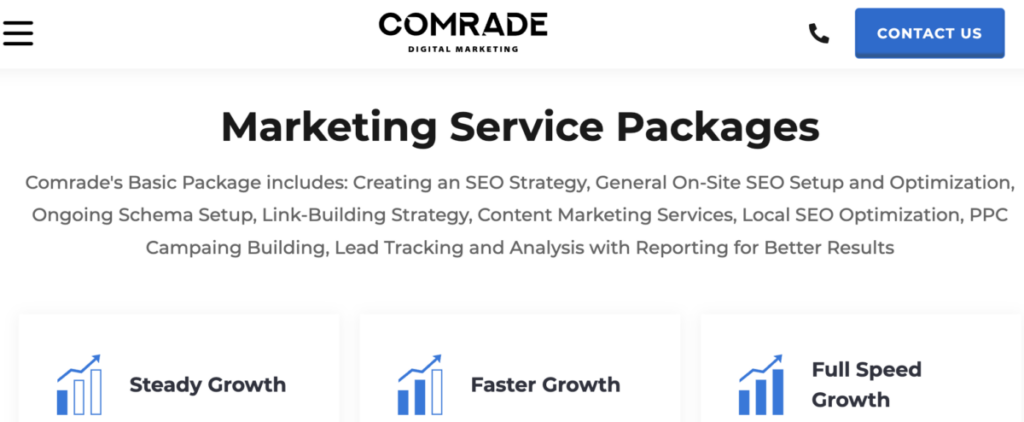
Digital Marketing Packages - Naming Examples
It works because all three packages communicate the value it has to offer. After all, even the most affordable package should help a business to grow, right?
Another way that you can draw a distinction between your packages is by highlighting which package is the most popular one. It’s a common practice employed by SaaS companies when selling their subscription plans and can just as easily be used by digital marketing agencies, like LYFE Marketing shows.
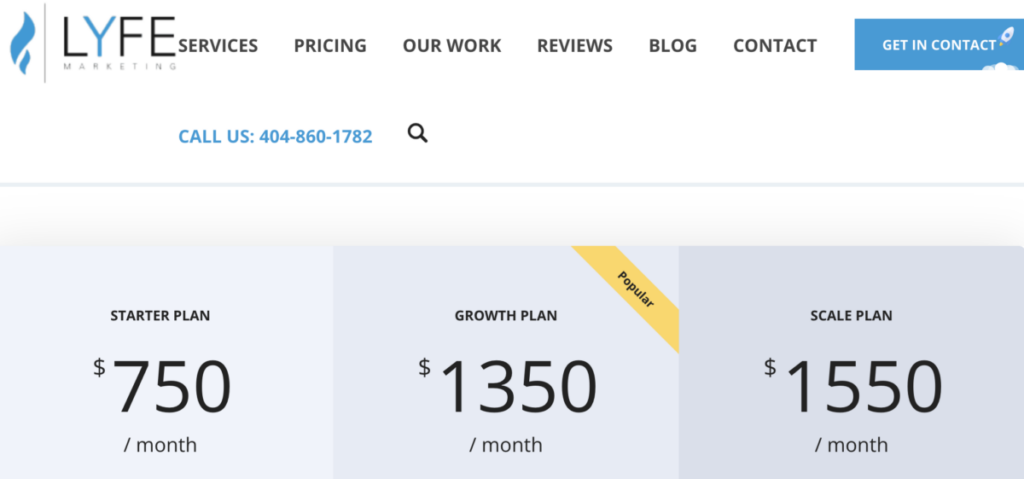
Digital Marketing Packages - Naming Examples (LYFE Marketing)
Step 6: Write Package Descriptions
Physical products aren’t the only things that need compelling descriptions. If you’re selling a service, you also need to take the time to describe it.
In the case of digital marketing packages, you need to split your mind in two. You need to think about how you’ll describe the individual services as well as present the overall package to your audience in a way that conveys its value. Prospective clients for digital marketing should be able to read your copy and immediately understand the value they can get from each package.
Focus on the benefits that the services and package have to offer. What difference can the package make for your clients?
Descriptions are also needed to distinguish between the different packages and tiers. Why should they choose one package over the others?
The way SmartSites describes and sells their different packages serve as a great example. In fact, they went as far as to create a “fact sheet” for each package.
Firstly, they dedicate a whole section explaining what makes their services effective. For example, on the fact sheet describing their PPC services, they list the following as benefits:
- You’ll get a dedicated PPC analyst.
- The services are tested and proven.
- It includes real-time, transparent reporting.

Digital Marketing Packages - Description of Benefits
Secondly, they incorporate several examples of social proof. This includes:
- Listing that they’re a Google Partner, Meta Business Partner, and Microsoft Partner (as well as explaining why this matters — extra support and access to exclusive betas)

Digital Marketing Packages - Examples of Social Proof (Partners)
- Displaying logos of clients
- Adding third-party client reviews

Digital Marketing Packages - Examples of Social Proof (Reviews and Logos)
While they don’t specifically reference the results that they can generate, one of the reviews mentions the type of return on investment (ROI) that their PPC services generated. Including this type of detailed review is gold.
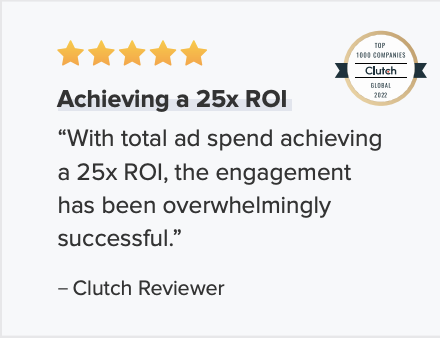
Digital Marketing Packages - Examples of Social Proof
Step 7: Test and Adapt
Your first attempt at packaging your digital marketing services may not necessarily work. This is perfectly normal. It’s all about testing and adapting to find a solution that works best for you.
You’ll need to play around with:
- Which services to group together
- Pricing
- Tier options
- Add-ons
- Posting frequency
- The number of social platforms supported
Let your clients’ needs and the performance of the current packages guide you.
Ken Fortney, senior content marketing manager at GoSite and founder of That Local Pack (an SEO agency specializing in local SEO), suggests that you take a hands-on approach to creating digital marketing packages. He explains:
At the end of the day, you’re delivering a service. You should remain focussed on your customer.
Ken does that by creating a direct line of communication.
Dieter Hsiao, CEO and co-founder of DIVISA, an award-winning digital consultancy that works with DTC fashion, beauty, and consumer product brands, also emphasizes the importance of checking in with your clients. Here’s how they do it:
For example, for a jewelry brand, they held bi-weekly updates in addition to regular reports. He explains that this has enabled them to make strategic adjustments quickly. The results — a 25% increase in the client’s monthly sales figures. Plus, it also built trust, key for encouraging businesses to renew the package.
TLDR: Research, Package, Promote, Adapt
Digital marketing packages help to guide business owners, in terms of what they need and it will cost. There should be a logical flow in how you group your services together and the price increase between the different packages.
The services that you include should be in-demand. Hence, the need to do thorough market research too.
That said, to ensure that it remains profitable and generates results, agencies should design them around their top-performing services.
Then, like with the actual marketing strategies, you’ll need to continuously check that you’re still hitting the mark. If not, be ready and willing to adapt your packages.
Frequently Asked Questions
What are the benefits of offering digital marketing packages?
Here are some of the key benefits that offering digital marketing packages can offer agencies:
- It simplifies the decision-making process, making it easier to convert new prospects.
- It’s perfect for introducing new services and solutions into your offering, allowing you to test how well they perform before you introduce them as a full-fledged offering.
- You can use it to promote low-performing services by bundling your less popular services with other complementary services and turning them into a comprehensive package.
- It encourages clients to spend more with your agency.
What are the common pricing models used by digital marketing agencies?
In addition to offering a package, digital marketing agencies typically use one of the following pricing models (or a combination of a few):
- An hourly rate (this is especially popular when offering extra services)
- A flat rate per project (this is typically preferred for one-off projects like website design and can also include a minimum fee)
Which factors can impact the cost of a digital marketing package?
There are several factors that can impact how much a digital marketing package costs. These include:
- The location of the agency
- The number of services included
- The number of channels supported
- The posting frequency
- The client’s industry
What are better: pre-packaged services or custom marketing packages?
The benefit of offering pre-packed services is that they are cost-effective. It’s ideal for clients that need help in only a few specific areas like SEO and content marketing. However, if a client needs a wide variety of digital marketing solutions, offering custom marketing packages can be better.
What should a digital marketing package include?
Digital marketing packages typically include a combination of the following services:
- Strategy
- Social media marketing
- Content marketing
- Paid social or search
- SEO
- Analytics and reporting

